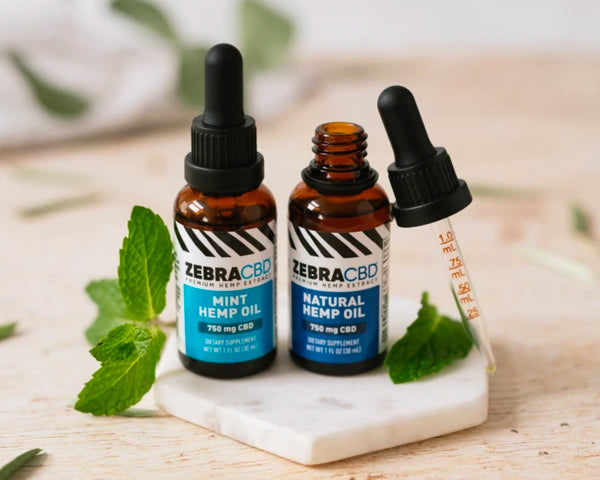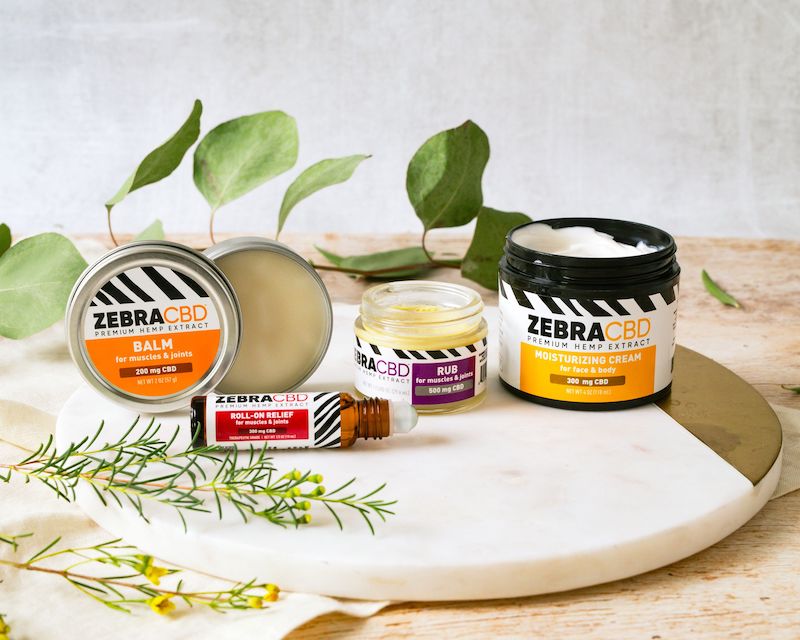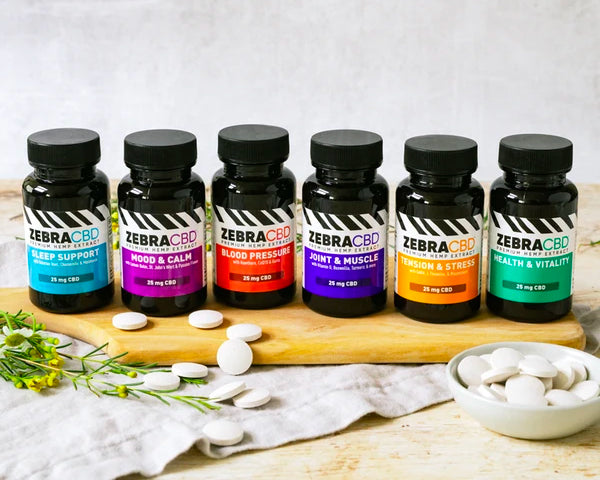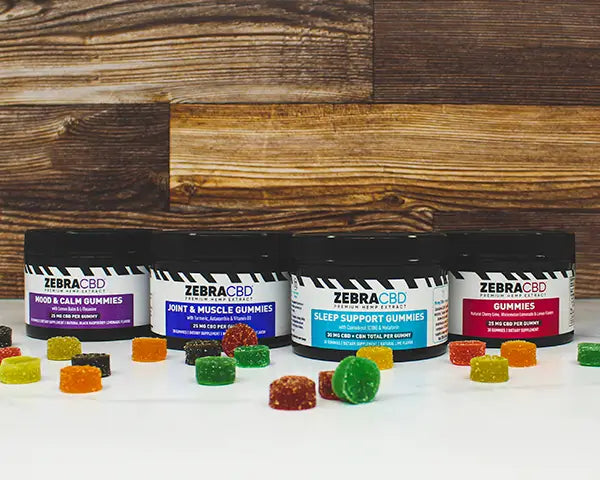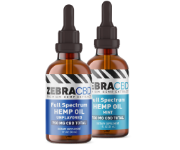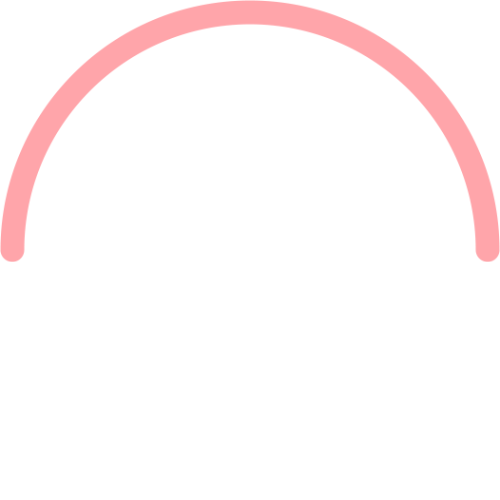
Foraging is more popular than ever. Have you ever been out on a walk and spotted a plant that looks very much like the hemp illustrations you’ve seen on merchandise from posters to socks?
If you’re already familiar with CBD and its myriad potential benefits, it’s natural to be curious about the hemp plant, from which CBD is sourced, and its anatomy. But without the proper knowledge, it’s easy to mistake anything from Japanese maple to okra for hemp!
The hemp plant’s flowering buds have the highest concentration of cannabinoids, including CBD, THC and CBG.
If you’ve ever wondered, “what does a hemp plant look like?”Or “what’s the difference between hemp gummies vs. CBD gummies?” This is your guide.
The Anatomy of a Hemp Plant
The hemp plant is best known for its distinctive leaves. They’re usually depicted as bright green, with seven serrated fingers. But the hemp plant’s leaves can vary in color and number of leaflets.
There are numerous varieties of cannabis, so understanding all parts of the hemp plant can maximize your chances of properly identifying it.
Next, we’ll go over the major parts of the hemp plant and their uses.
The Hemp Seed
All hemp plants start as seeds measuring 2-3 mm across. The creamy green-color seeds are contained in paper-like black hulls. Hemp seeds are impressive in their own right. Hemp seed oil is commonly used in cosmetic and culinary applications, while hemp hearts (hulled hemp seeds) can be turned into milk, sprinkled on salads or eaten raw.
While they don’t contain any CBD, hemp seeds do contain the following nutrients:
- protein
- magnesium
- calcium
- phosphorous
- zinc
- omega-6 fatty acid (linoleic acid)
Hemp Stalk
Hemp plants grow from their seeds into fibrous, woody stalks.
To identify the hemp plant, look for tall stalks (up to 10 ft) with branches emerging from distinct joints. Branches will not extend very far from the plant itself, which tends to grow vertically rather than spreading out horizontally.
Like other aerial parts of the plant (leaves and flowers), hemp stalks contain some CBD. However, they’ve long been prized for their other attributes:
- Hemp’s long, malleable fibers can be separated from their exterior casing. While natural decomposition aids this process, wetting or chemically treating hemp can hasten the separation.
- Hemp stalks can be balled into yarn and used for a variety of applications, from creating batting for furniture to weaving clothing and home textiles.
- Before the rise of cotton farming, hemp was a go-to source for paper, ship sails and other products.
Past scheduled substance laws discouraged hemp farming within the U.S. However, now that industrial hemp is legal, hemp fibers are once again being used for everything from textiles to plant-based plastics to biofuel.
Hemp Leaves
What does hemp look like? As we’ve noted, its leaves are its most distinctive characteristic. Each leaf is made up of slender, serrated fingers. There are usually 5-7 fingers or “leaflets” on a single leaf. They join together at the rachis, which connects the leaf to the branch.
In some cases, there could be as few as three or as many as nine leaflets on a leaf. Lower leaves have fewer leaflets, while those higher on the plant have more, but there is always an odd number of leaflets.
Each leaf on a hemp plant is between 5 and 10 inches long, depending on the size of the plant. They tend to grow in opposite pairs along branches that protrude from the hemp stalk.
Depending on the specific genetic makeup of the plant, hemp leaves can vary in color from green to purple. Cannabis comes in two main varieties: sativa and indica. Depending on its provenance, a hemp plants’ leaf density can appear quite different:
- Cannabis indica plants have fatter leaflets that grow closer together, giving the plant a bushier appearance.
- Cannabis sativa plants have thinner leaflets that grow further apart. They tend to be taller.
Hemp Flower
The hemp plant’s flowering buds have the highest concentration of cannabinoids, including CBD, THC and CBG. These compounds work together with other naturally occurring compounds like flavonoids and terpenes to produce a variety of beneficial effects. But before we get into use, we’ll focus on anatomy and identification.
When you’ve identified a cannabis plant, how do you know if it’s a hemp plant or a marijuana plant? The short answer is that there’s no way to know based on plant morphology alone.
Sometimes, hemp flowers can be identified by their fuzzy appearance, sticky resin and distinctive hemp scent. But these characteristics actually only occur only in female hemp flowers. To understand why, we’ll dive a little deeper into the difference between the sexes of the hemp plant.
Male vs. Female Hemp Plants
While there are both male and female hemp plants, most commercial hemp farms grow only female plants, which are rich in CBD. However, the hemp plant can be a male (pollen-producing) , female (seed-producing) or hermaphroditic (self-pollinating) plant.
Female plants produce flowers to attract pollinators. Once they’ve been pollinated, they concentrate their energy on producing new seeds. However, as long as they remain unfertilized, female plants continue to produce cannabinoid-rich resin without diverting any energy to forming a seed. Therefore, industrial hemp farmers need to keep an eye out for male plants that could disrupt their crops.
Characteristics of Male Hemp Plants
Male hemp plants mature more quickly than female plants. They produce tight clusters of flowers toward the top of the plant.
Before they flower, male plants produce raised, green sacs (a.k.a. calyx) on the internodes of hemp plants (where branches and stalks join). Some compare the appearance of male flowers to tiny clusters of green bananas. When buds open, you’ll see five pollen-producing stamens. These buds will die off once pollen is released.
Characteristics of Female Hemp Plants
Female hemp plants are slower to mature than their male counterparts. Before they flower, female plants do not produce a raised calyx (bud). Female hemp flowers first appear as small, tight clusters of green petals. Thanks to their pistils, they have a hairy appearance. These tiny hairs are designed to catch pollen. They will eventually open to produce white or creamy yellow petals.Some say that these flowers resemble feathers.
Characteristics of Hermaphroditic Hemp
Some hemp plants develop both male and female flowers. These plants are capable of self-pollination.
When growing hemp, hermaphrodite flowers present the same problem as their male counterparts. Potentially valuable CBD-laden flowers are fertilized and begin to dedicate their energy to forming seeds.
How Can I Tell the Difference Between Hemp and Marijuana?
When you’ve identified a cannabis plant, how do you know if it’s a hemp plant or a marijuana plant? The short answer is that there’s no way to know based on plant morphology alone due to the different chemical composition of hemp and marijuana plants. Both plants are varieties of Cannabis sativa and Cannabis indica plants; however, they’ve been bred to have different characteristics.
Did you know that kale, collard greens, Brussels sprouts and broccoli all come from the same plant? Thanks to centuries of agricultural experimentation, humans have become incredibly adept at using one plant for more than one purpose.
Just like veggies, cannabis plants can be bred to favor various traits. For example, cannabis plants bred to produce hemp seeds will be fertilized. Those bred to produce fiber for textiles will have long, dense stalks.
Federal guidelines mandate that legal, industrial hemp contain less than 0.3% THC (tetrahydrocannabinol). The difference between a hemp plant and a marijuana plant comes down to this one factor: the amount of THC present in the plant’s aerial parts. Laboratory testing is the only way to identify the THC concentration of a given plant.
Choosing Your CBD Source
Are you interested in experiencing the potential benefits of hemp extract?
Thanks to its interaction with the endocannabinoid system (ECS), hemp-derived CBD and its partner compounds can support your body’s homeostasis in various ways.
Many people use CBD to deal with daily stress. Others take it before bed to support healthy sleep cycles. And still others apply CBD topically to soothe post-exercise inflammation. But to enjoy these benefits, it’s important to understand what’s actually in your CBD products.
It may be tempting to take a DIY approach with a foraged hemp plant or even a CBD flower from the local bodega. But not all CBD is created equal.
It goes without saying that plants in the wild don’t come with labels. Depending on the soil that it was grown in and the plant’s genetics, a given hemp plant will contain unpredictable levels of CBD, THC, heavy metals and pesticides.
Likewise, not all hemp purveyors provide clear, accurate labeling. What’s the difference between a hemp gummy and a CBD gummy? A CBD gummy should contain CBD, but the hemp gummy’s manufacturers have left you with a mystery product!
Look for CBD labels that clearly state the amount of CBD per bottle and per dose. Keep in mind that not all labels are accurate. In fact, the FDA found that more than half of CBD brands contain at least 20% more or less CBD than advertised. The most reliable CBD brands third-party test their products to make sure they meet their label claims.
Natural Hemp-Derived CBD For Every Application
The best way to experience the benefits of CBD is to buy your hemp-derived products from a reliable source.
At Zebra CBD, we’re industry experts in organically grown American. hemp. Our source farms meticulously cultivate hemp plants containing high levels of CBD and low levels of THC that fall within the legal limit of less than 0.3%. We subject our final products to third-party testing to ensure they meet their label claims for potency and purity. And we’re the only CBD brand to offer a Label Accuracy Guarantee™.
From popping a CBD gummy to giving yourself a soothing massage with CBD rub, cream or balm, there are countless ways to enjoy hemp-derived CBD. Whatever product you choose, you can rest assured it was derived from high-quality, CBD-rich hemp.
Source:
Medical News Today. FDA report evaluates CBD product labeling accuracy. https://www.medicalnewstoday.com/articles/fda-report-evaluates-cbd-product-labeling-accuracy
Business Insider. These 6 common vegetables are actually the same plant. https://www.businessinsider.com/broccoli-kale-brussels-sprouts-vegetables-all-the-same-plant-2015-11
Frontiers in Plant Science. Hermaphroditism in Marijuana (Cannabis sativa L.) Inflorescences. https://www.ncbi.nlm.nih.gov/pmc/articles/PMC7329997/
Civilized. How to identify a marijuana plant. https://www.civilized.life/articles/how-to-identify-a-marijuana-plant/
Britannica. Hemp. https://www.britannica.com/plant/hemp
USDA. Seeds, hemp, hulled. https://fdc.nal.usda.gov/fdc-app.html#/food-details/170148/nutrients
Journal of Food Science and Agriculture. Investigation of suitable seed sizes, segregation of ripe seeds, and improved germination rate for the commercial production of hemp sprouts. https://doi.org/10.1002/jsfa.10294

